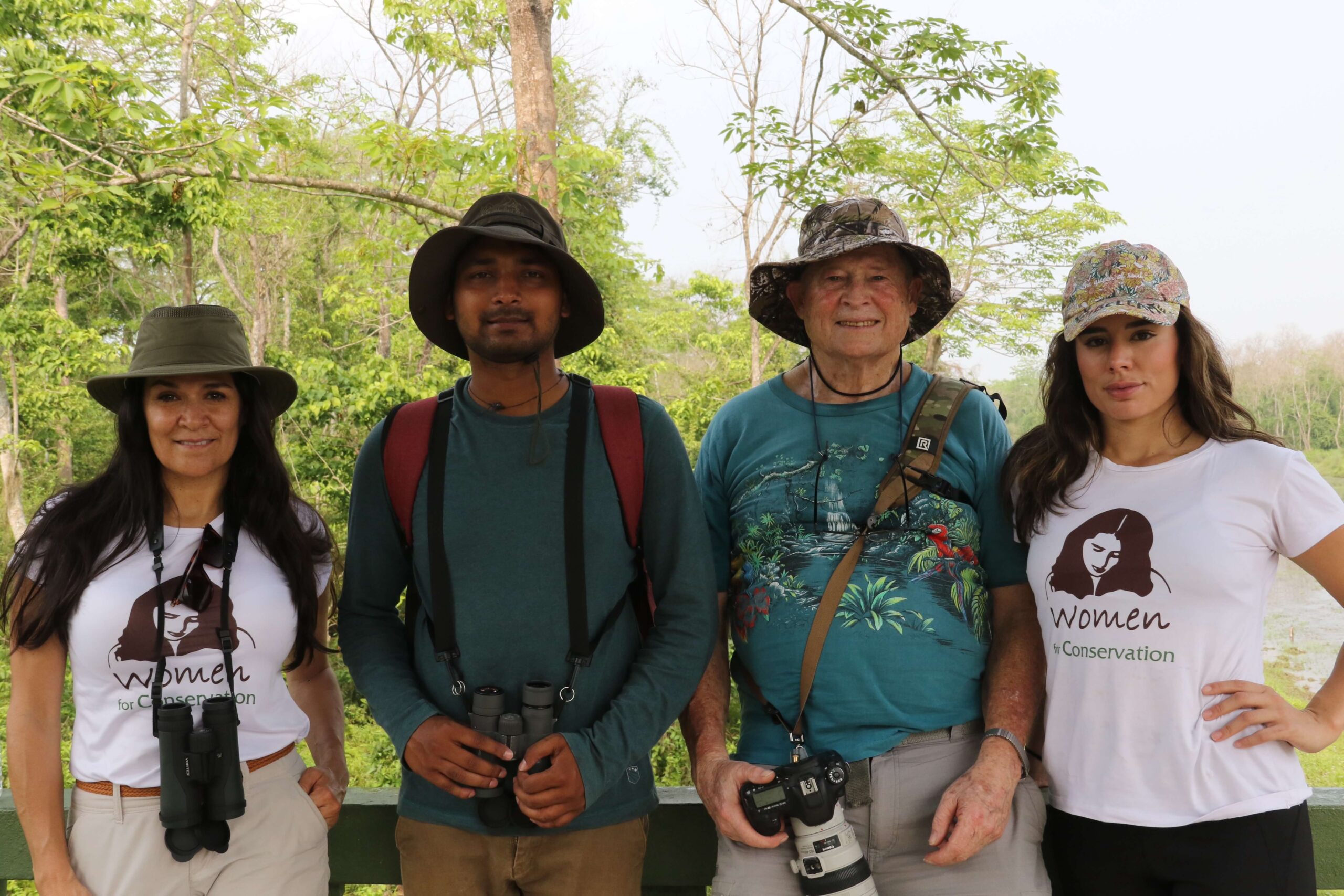
After two years of running programs in Nepal, the Women for Conservation leadership team was finally able to visit and see our projects in person. This April, WFC Founder & Executive Director, Sara Inés Lara, along with Co-founder & Director of Conservation, Isabella Cortes, spent three weeks visiting Women for Conservation’s Nepal projects with Birds Nepal founder, Larry Thompson.
 The incredible one-horned rhinos and Bengal tigers of Chitwan’s floodplains left Sara, Isabella, and Larry breathless – though it wasn’t the main purpose of their trip to Nepal. Women for Conservation’s Sara Inés Lara and Isabella Cortes Lara traveled with Larry Thompson to Nepal for three weeks in April to evaluate the programs launched by the partnership between Women for Conservation and Birds Nepal.
The incredible one-horned rhinos and Bengal tigers of Chitwan’s floodplains left Sara, Isabella, and Larry breathless – though it wasn’t the main purpose of their trip to Nepal. Women for Conservation’s Sara Inés Lara and Isabella Cortes Lara traveled with Larry Thompson to Nepal for three weeks in April to evaluate the programs launched by the partnership between Women for Conservation and Birds Nepal.
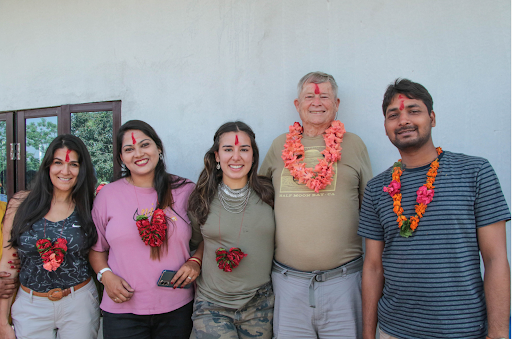
Larry Thompson founded Birds Nepal after going on a life-changing birding trip led by Seejan Gyawali. During the expedition, Larry became aware of the difficulty of doing nature conservation work in a poor country having minimal financial resources and few job opportunities for highly-motivated young scientists like Seejan. Thompson says, “Let me tell you about the most impactful moment that underlies Birds Nepal. At the end of my long birding trip with Seejan in Nepal over three years ago, I told him that I wished my biological son was ambitious like he was. Seejan simply said: I am your Son. After telling him I would provide financial support for his conservation work, he had tears of gratitude at our airport farewell. Now I speak to him almost every day via video-chat.”
Women for Conservation has partnered with Birds Nepal since 2020 to promote inclusive, participatory conservation by bringing environmental education, family planning, and sustainable livelihood training to women and youth in the Nawalpur District. In an interview with Sara Inés Lara, Seejan discussed how Women for Conservation’s funding for the Sustainable Livelihoods Program has helped women create clothing booths at the local market, which allows them to buy cylinder gas rather than destructively rummaging through the forests for wood fuel. “This is one of the good impacts Women for Conservation has had on conservation,” said Gyawali.
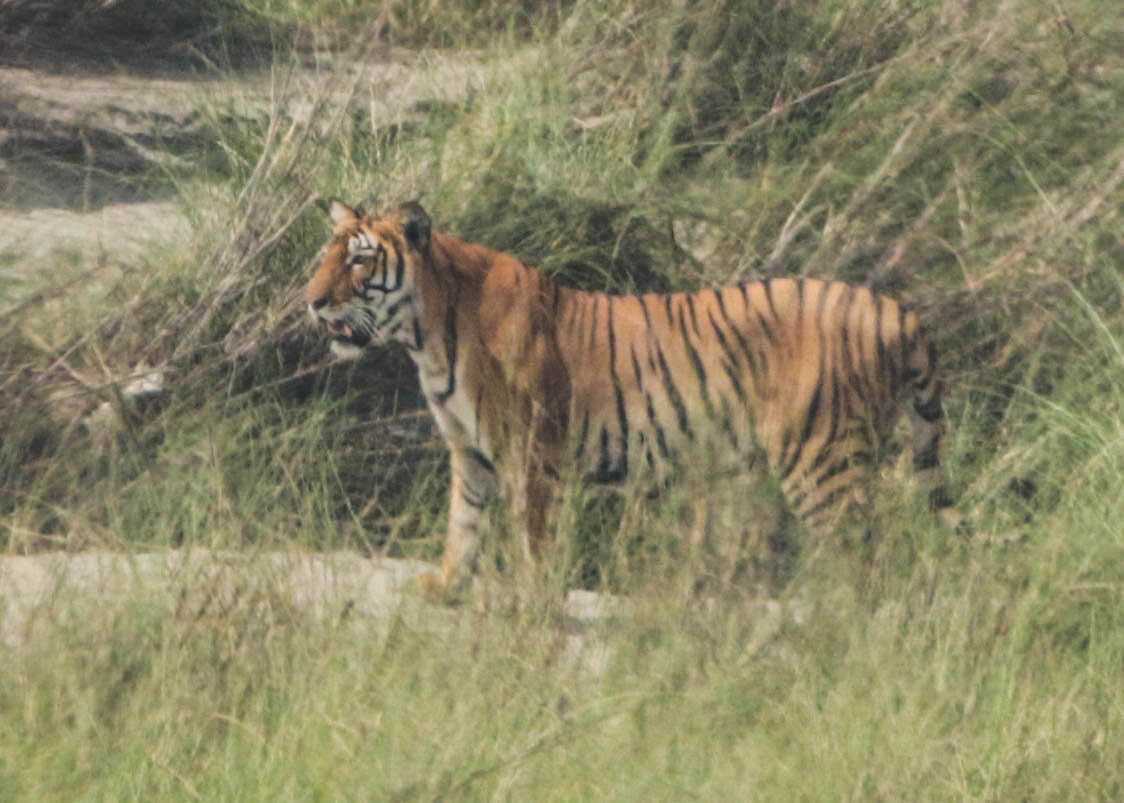
Sara, Isabella, and Larry joined Seejan and Shanta Buhsal, co-founders of Birds Nepal, in the southern edge of Nawalpur District, which borders Chitwan National Park. This popular tourism park is home to many threatened species including the Bengal Tiger, Greater One-horned Rhino, and the rare Bengal Florican. Chitwan is home to many of Nepal’s Bengal Tigers, although the species is still endangered due to poaching and habitat loss.
Through Birds Nepal’s programs, women and children participate in family planning, career training, and conservation workshops. School projects include planting trees, building fences to protect native plant species from free-ranging cattle, picking up garbage, and installing bird nesting boxes at schools. Importantly, students are thrilled to go on monthly jeep wildlife safaris to learn about local ecosystems, endangered animals, and how to identify native bird species.
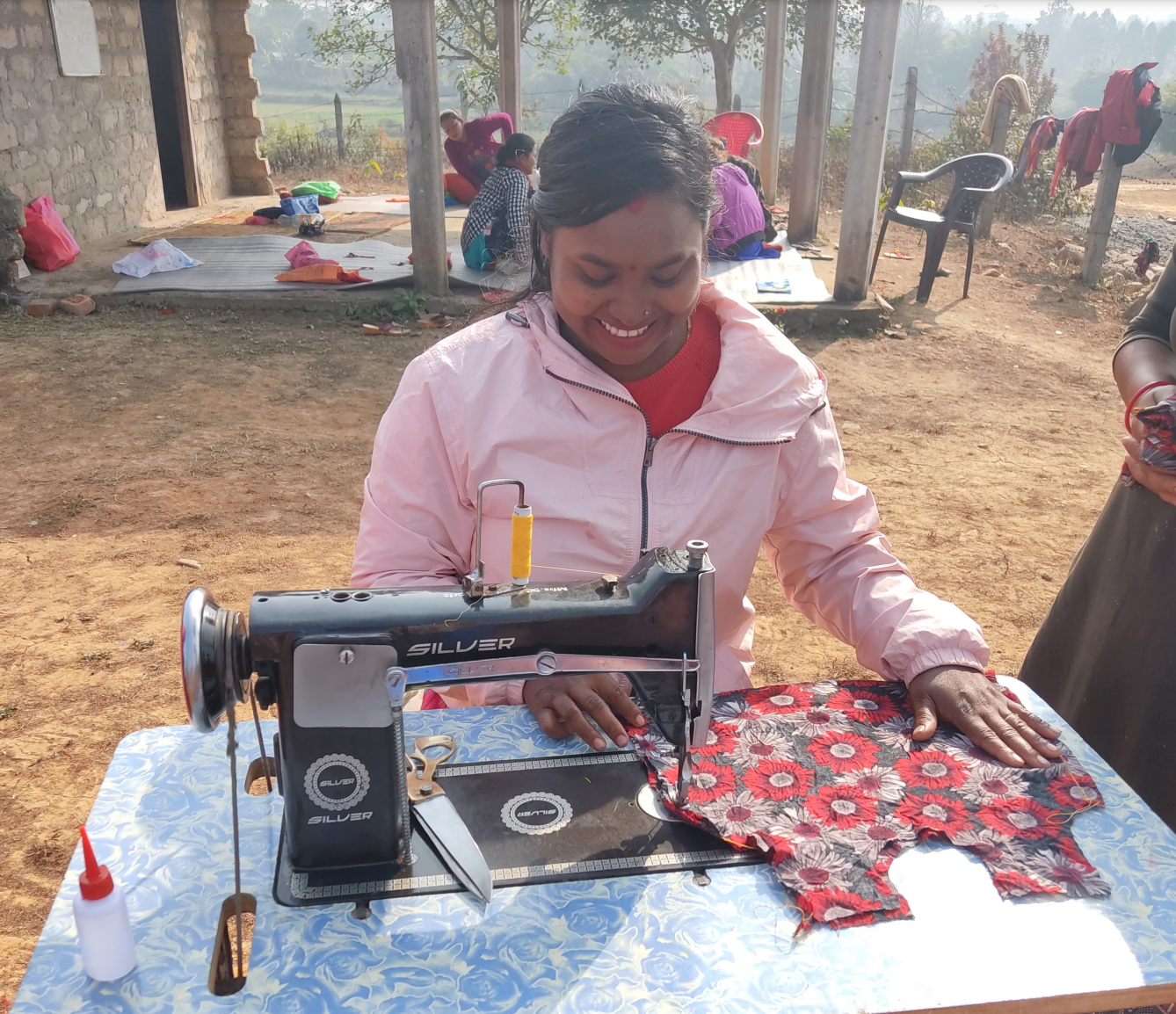
The team met with the instructor and participants in one of our ongoing sewing classes, which involve three months of career training and environmental education. In this program, marginalized women undergo sewing training to empower them to start their own micro-businesses. We emphasize giving women of ethnic minorities economic opportunities that can help them generate income for their families without depending on the extraction and degradation of natural resources. By providing sustainable livelihoods, we are preserving Nepal’s incredible natural heritage and biodiversity. The stories these women shared with our team brought tears to our eyes (and theirs too in one case), and drove home how life-changing these programs can be. Many of the women were married to men who must work outside of Nepal because there is so little economic opportunity at home.
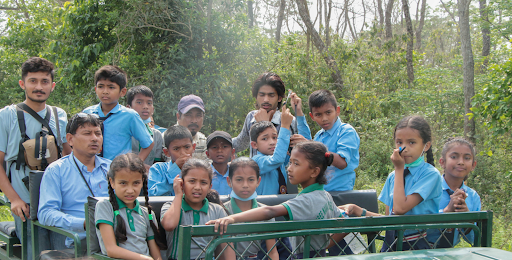
The team also participated in our Environmental Education program, involving three jeeps with about 30 students on a thrilling safari through Chitwan National Park. Multiple One-horned Rhinos were seen, and a Bengal Tiger was seen in a later safari in Bardyia National Park. A Rhino even approached our team’s jeep to show that it was not afraid of the vehicle. By introducing school children to the natural wonders of Nepal’s biodiversity, Women for Conservation and Birds Nepal are inspiring the next generation of conservation leaders to protect the natural world. Our program also brings environmental education into the classroom, so that some students become motivated to pursue careers in wildlife conservation and ecotourism.
This year Birds Nepal is giving increased weight to student scholarships for the poorest students, who oftentimes cannot afford the most basic school supplies or even shoes. We schedule monthly student safaris, as this program has been wildly successful for instilling passion for conservation work in the region’s youth.
Birds Nepal acquired land in the Narayani River basin in hopes to construct a bird education and research center for students and scientists. The reserve already has a bird blind, and a pond that attracts wildlife. Hundreds of trees have been planted along with wildflowers and a rose garden. The bird blind was designed to accommodate 20 students, and we plan to hold bird classes there.
The Women for Conservation team was gratified to visit our first programs outside of Colombia, and is most thankful for the opportunity to meet both our Birds Nepal partners as well as the women and children impacted by our programming.
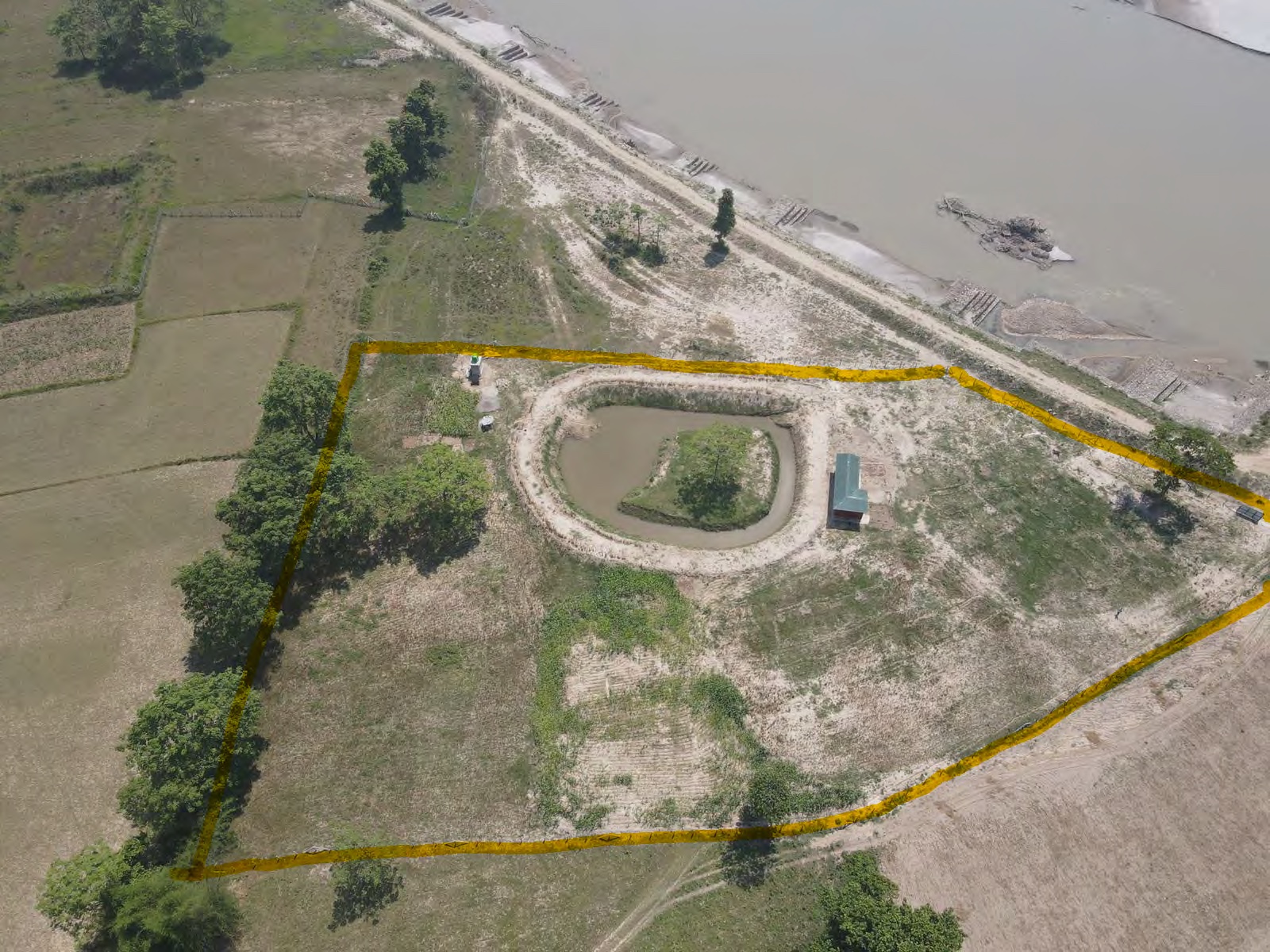
To read our previous update from Nepal, click here >>>
Written by Zoe Vozick


